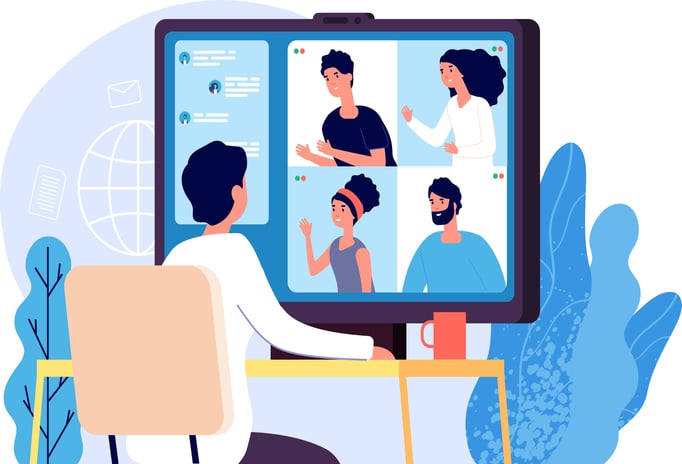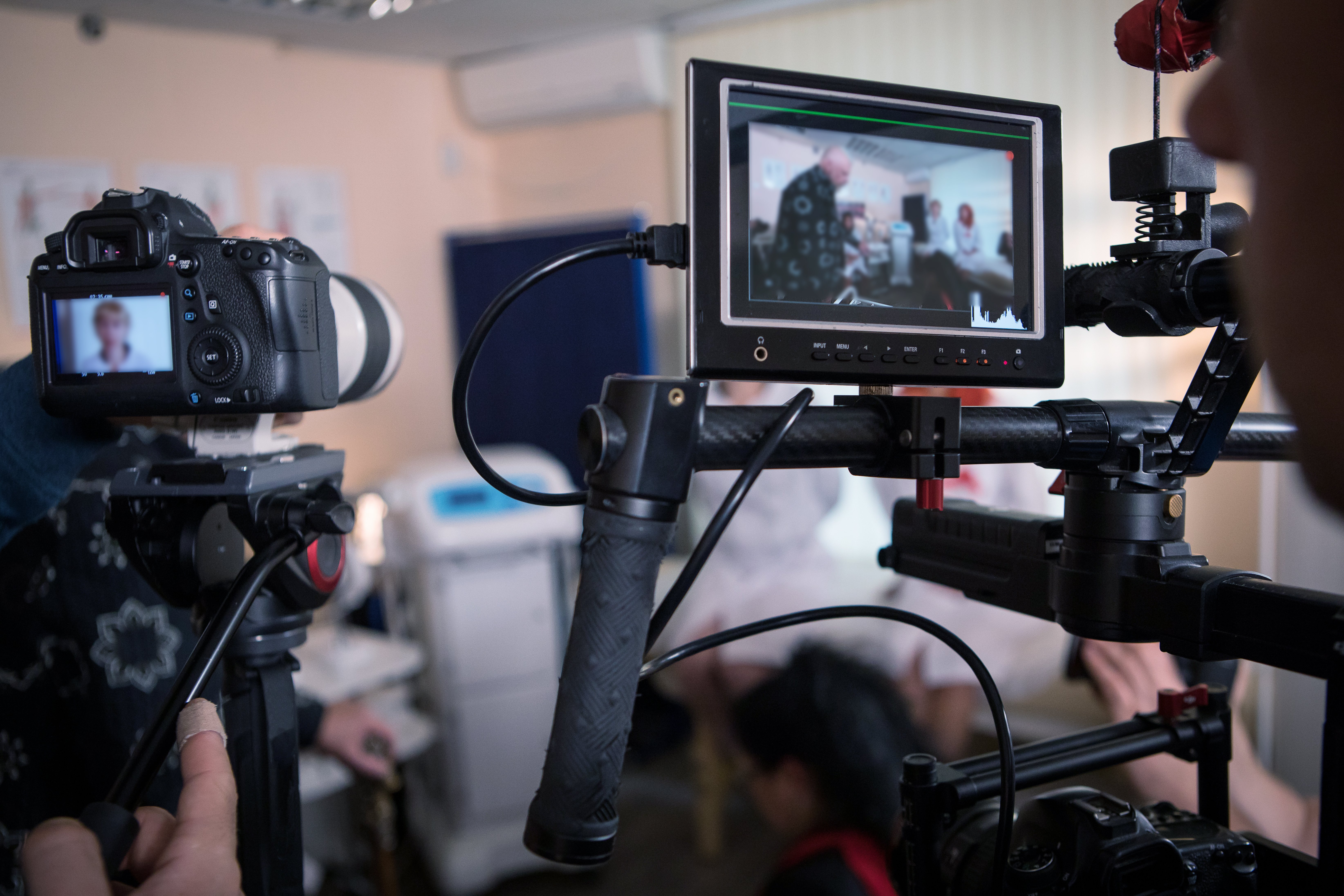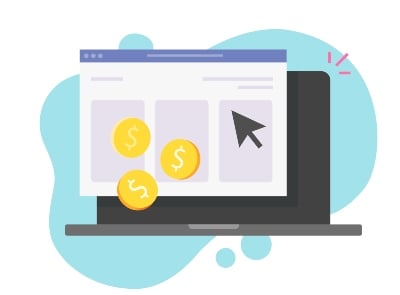Live streaming has found its way into the music industry and it is here to stay. Whether hosting a completely virtual event or a hybrid event, live streaming offers a way to engage with a larger audience and provides opportunities for additional revenue.
Many musicians, producers, and DJ’s have begun to host live streams in much larger numbers. Twitch saw a 385% year over year growth in their Music & Performing Arts content category. The number of hours watched grew from 3.6M in April 2019 to 17M in April 2020. For the music industry as a whole, that is an indicator that live streaming is in high demand.
In addition to performers, music venues have also implemented live streaming. Whether hosting a show with no audience or throwing a hybrid event, live streaming can be a powerful marketing tool and an additional revenue stream for venue owners.
We have rounded up all the information and tools you need to host a successful live stream event. This guidebook will cover the following:
- History of Live Streaming
- Live Stream Software Options
- Getting Starting
- Using Open Broadcaster Software (OBS)
- Enhanced Video and Audio Techniques
- Generating Revenue
- Marketing The Stream
- Privacy and Security
- Live Streaming by Industry
History of live streaming
Since the invention of the television in 1928, entertainment has been broadcast via video into people’s homes all over the world. Then with the invention of the internet, just about anything, from live sports events to a funny video of a dog running into a glass door can be streamed right at our fingertips.
The History of live stream events online is a storyline that showcases both the innovation of technology and the creativity of the entertainment and event industries. It began in 1993 when Xerox PARC streamed live performance of Severe Tire Damage. Fast forward to 2007 when Justin Kan, founder of Twitch, discovered a way to stream his life continuously by attaching a webcam to his hat and rigging his backpack to hold is a laptop.

Now many are asking themselves, “Is Cable Dying?” Live streaming is far more cost-efficient for consumers, with the average cable bill coming in at around $100. For many, a streaming service, or pay per view option is a much more economical choice. This way the viewer get’s to watch exactly what they want and is not paying for content they have no interest in seeing.
Live stream concert options
Today many social media platforms allow users to go live with the simple click of a button. With so much noise on each website, live streaming has served as a way for creators and businesses to cut through the chatter and widen their reach. On Facebook, users are four times more likely to watch a live video than a recorded video.
Social Media Platforms with Live Options:
- YouTube
- TikTok
- Twitch
While going live on social media is an excellent way to raise brand awareness and reach a larger audience, it does not capture valuable audience data or drive direct revenue. This is why many have chosen to ticket their live stream or host it through a webinar service that requires registration.
Curious about which live streaming platform is right for you? Read 5 Questions to Ask When Choosing a Live Stream Software.
Getting started
Setting up a live stream can feel like a daunting task. However, it can be as simple as opening an app on your phone and streaming directly from there.
A simple test run can before going live can do wonders to improve the quality of a live stream. Oftentimes, many go live without ever having tested their equipment. This can lead to incorrect input/outputs and bad viewing experience for those watching.
Another key to a successful live stream is to write an engaging script. Many platforms have a chat box where viewers can communicate with the host and each other. Well-positioned questions throughout the stream can help facilitate meaningful conversations.
Using open broadcaster software (OBS)
Most live stream software will have a very simple interphase that only allows for one audio and one video input. Those looking to add more video production to their live stream can utilize Open Broadcaster Software (OBS) to create a more dynamic viewing experience. OBS works as a studio that can stream out to your chosen platform.
 OBS operates by allowing users to create various scenes using audio and video inputs. Each scene can have a different input allowing for multiple camera angles to be used. You can use OBS to mix video, screen share, host guests, add banners to your screen, create transition slides, and much more.
OBS operates by allowing users to create various scenes using audio and video inputs. Each scene can have a different input allowing for multiple camera angles to be used. You can use OBS to mix video, screen share, host guests, add banners to your screen, create transition slides, and much more.
Looking for a tutorial on how to maximize OBS for your live stream? Read "How to Use OBS to Mix Video, Screen Share, and More on PromoStream” to learn more.
Enhanced video and audio
While you can stream from your phone, streaming from a computer will give you many more options when it comes to equipment. When it comes to cameras there are a few options but a simple external webcam provides high quality and an affordable price point.

To prevent echo, it is highly recommended to wear wired headphones when live streaming. Some have a built-in microphone that will help improve audio quality or an external microphone can be used. Also, the room should be soundproofed as much as possible. Test the audio by recording the room in silence so that any background noise can be detected.
When it comes to cameras there are three options to chose from:
- Webcam (External or Internal)
- Phone Camera
- DSLR (Professional)
A webcam will be able to work with whatever software you choose without the need for external hardware. If using a phone camera in conjunction with a computer, and not streaming directly from the phone, then a little additional leg work will be needed. A DSLR will need a capture card to properly stream.
In addition to choosing the right camera, lighting will greatly affect the video quality. A simple trick is to find a window to film near or a room with great natural lighting. A ring light can also do wonders for enhancing the visuals. Those wanting to go the distance can invest a full-on three-point lighting system.
Looking for an in-depth look at various camera setups and advanced lighting techniques? Download our FREE PDF GUIDE for an extensive over view of video equipment.
Generating revenue
There are a few ways that a live stream can become profitable. The easiest is by selling tickets. Many ticketing platforms have integrated streaming services, like Zoom and YouTube into their software. PromoStream is one of the few out there to offer an all-in-one solution for private, ticketed live streaming events.
 If streaming on social media then the way revenue is generated can vary. Platforms like Twitch and YouTube have integrated revenue streams through ads. However, creators need to have a minimum following to start generating income. Oftentimes, the money earned is very little. Most creators on YouTube earn $3 and $5 for every 1,000 video views. This is why many YouTubers turn to alternative methods to increase their ROI.
If streaming on social media then the way revenue is generated can vary. Platforms like Twitch and YouTube have integrated revenue streams through ads. However, creators need to have a minimum following to start generating income. Oftentimes, the money earned is very little. Most creators on YouTube earn $3 and $5 for every 1,000 video views. This is why many YouTubers turn to alternative methods to increase their ROI.
However, when selling tickets, a large following is not needed to start generating income. Event creators can start earning as soon as the first ticket is sold if the live stream is priced right. The key is to create an exclusive experience that true fans will pay for.
Marketing the stream
Once a date and price have been set, it’s time to start marketing the live stream. Creating a marketing timeline will ensure that all tasks get done with enough lead time before the event in the correct order.
Understanding which social media platforms are best for your event is the first place to start. Typically, Instagram, Twitter, and Facebook are generally the three that most virtual events will use. When using Facebook, be sure to create an event in addition to making a post so there is another channel for which your intended audience can be reached.
 If hosting a professional seminar or similar style of an event then LinkedIn would be the best social site to leverage. If your event is directed towards a younger audience then TikTok is where that demographic can be reached.
If hosting a professional seminar or similar style of an event then LinkedIn would be the best social site to leverage. If your event is directed towards a younger audience then TikTok is where that demographic can be reached.
One proven strategy to make your virtual event go viral is through the use of pre-sale registration pages. This tool uses gamification to incentivize fans to share the event and invite their friends to join in as well. Then, once tickets are on sale everyone that participated receives an email inviting them to buy tickets.
Privacy and security
Privacy and Security typically are not at top of mind until some sort of breach or intrusion occurs. However, this is usually too late. It is much easier to prevent than recover from a break in security. When deciding which live stream software to use, be sure to investigate their measures in place to protect your content.
In addition to making sure your account isn’t hacked, if selling tickets to a live stream, then making sure only ticket holders are viewing should be a concern. A recent threat to the live streaming world has been “Zoom Bombers” or intrusions within conference calls held on Zoom.
In the era of hackers, taking extra steps to ensure proper cybersecurity is essential. Many live streaming platforms have implemented two-step authentication or require passwords to enter conferences. With Promostream, each attendee is given their unique ticket ID to ensure security.
Beyond concerts
As live streaming fitness and yoga classes online have risen in popularity many instructors have found many advantages over in-person classes. For many, they can make more money with less risk by teaching online.
 There is less travel time, overhead, and no capacity limits are three factors that make virtual classes so appealing. Also, hosting a live class at a scheduled time instead of just simply pushing a video online can help keep participants more accountable.
There is less travel time, overhead, and no capacity limits are three factors that make virtual classes so appealing. Also, hosting a live class at a scheduled time instead of just simply pushing a video online can help keep participants more accountable.
Want to learn more about live streaming? Download our Free PDF Guide “How to Set Up Your First Live Stream Event”






